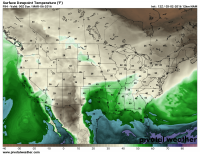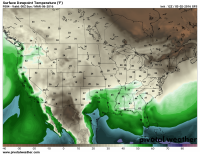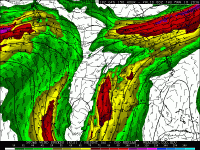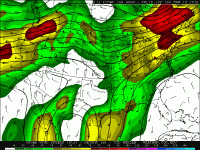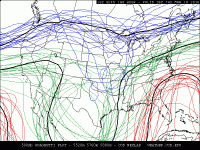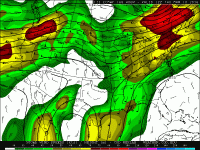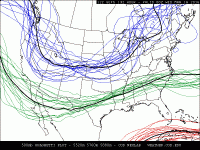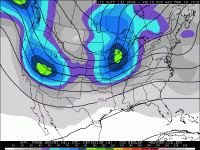Once again, I highly caution any use of a single deterministic model run past about 120-150 hours. It is
highly likely, if not a
virtual certainty that the forecast for a system at that range will change, if not dramatically, then at least in the details, in later forecasts.
Use ensemble products. I cannot stress how useful and valuable probabilistic forecasts are for synoptic scale features at that range. Getting hung up over one run is just going to stress you out. For example, 12Z GEFS 500 mb spaghetti plot:
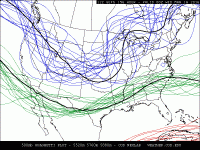
Incredible variability on the shape and location of any trough. I see trough axes as far west as Nevada (neutral to slight positive tilt) and as far east as Illinois (slight negative tilt), with really all the parameter space in between filled pretty evenly.
Furthermore, a dProg/dt from the GFS control member has changed dramatically over just the past 24 hours.
Let's look at some other ensemble products. First, the NAEFS (from EC's website):
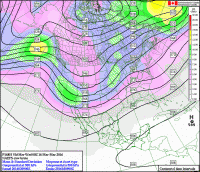
Big ol' spread bullseye in the SW US with increased spread all along the ensemble mean mid level jet stream -> very large differences between some ensemble members in terms of 500 mb heights in that area -> large uncertainty in trough placement.
How's about the ECMWF EPS?


Yes, the age of these forecasts differ (ECMWF and NAEFS products come out much later than GEFS products), but the 00Z GEFS looks even more funky during that time frame.
